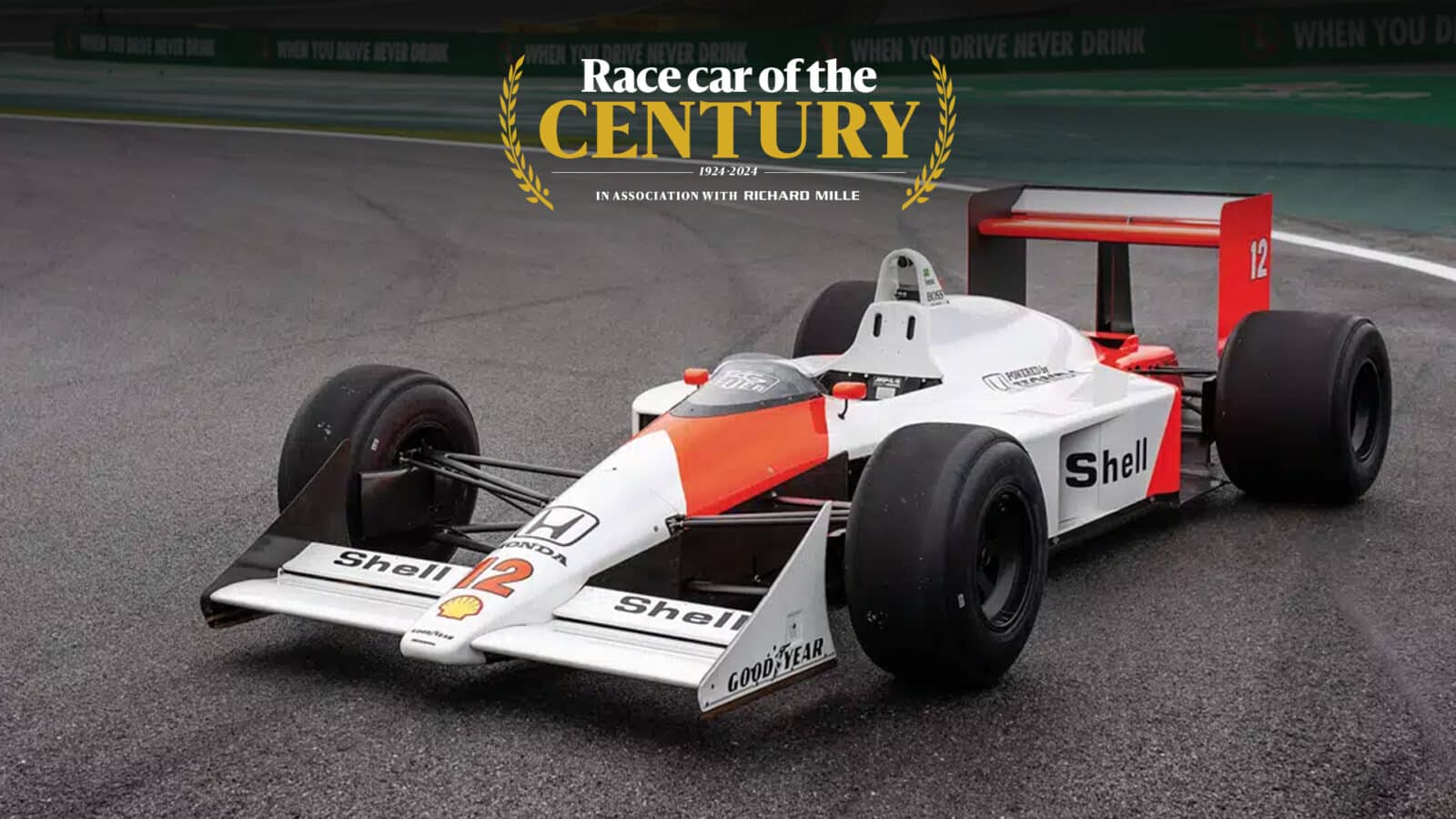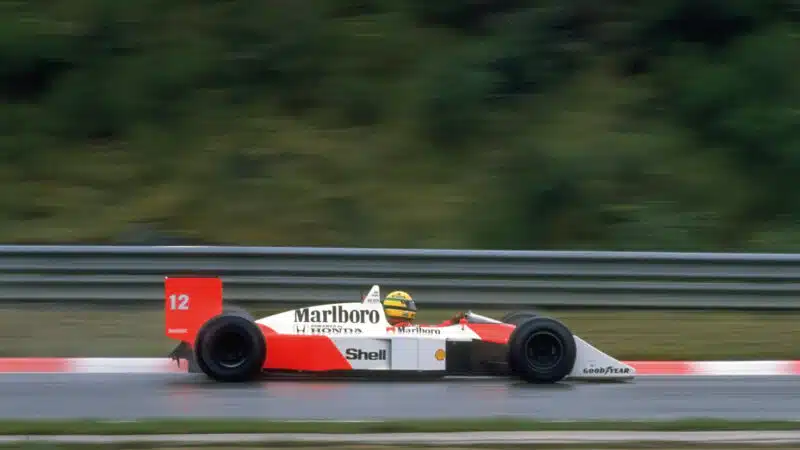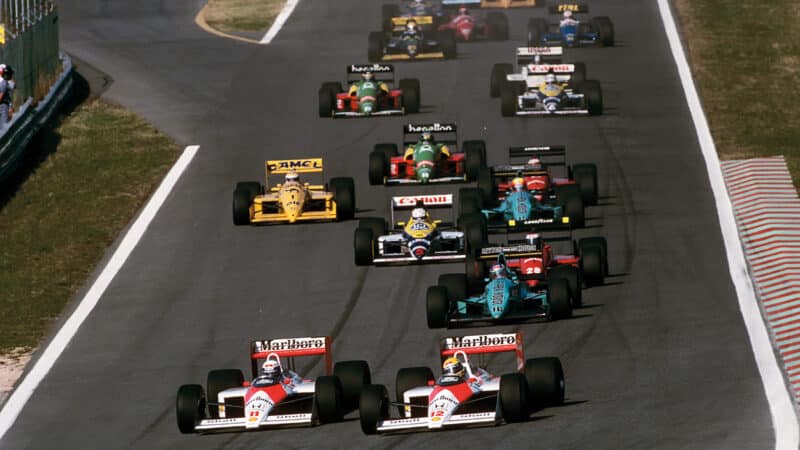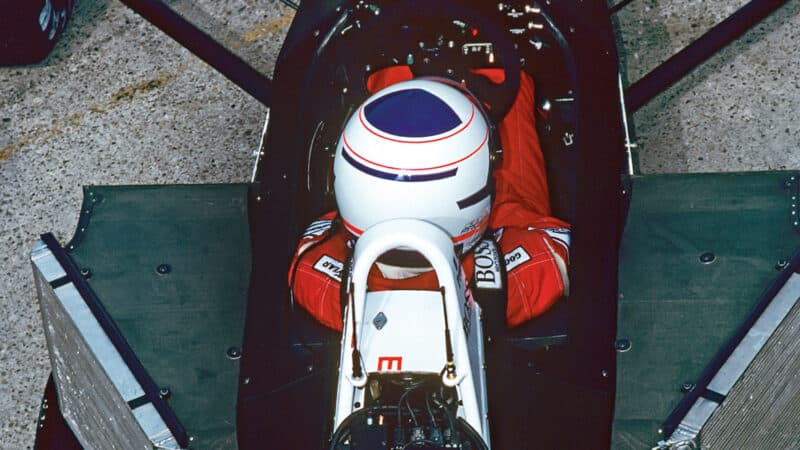McLaren MP4/4: Sleek F1 machine that won 15 races out of 16
With 15 wins out of 16 races, McLaren’s MP4/4 is not just the F1 car of 1988 but of the entire decade, says Damien Smith

DPPI
Voting has now closed in our Race Car of the Century poll and the winner will be announced later this summer. Sign up to our Archive newsletter and you’ll be among the first to be notified.
7 1980s McLaren MP4/4
Alain Prost knew he had something special under him, just a couple of laps into his first run. He knew he had a car in the form of the lowline MP4/4 that would once again win world championships for McLaren, and immediately told Ron Dennis so before adding, according to chief mechanic Neil Trundle, that he “already felt we could even win all the races”.
Prost, as usual, wasn’t far wrong. McLaren came only a backmarker botch away from an unblemished whitewash in 1988. As it was, Prost and new team-mate Ayrton Senna carved up 15 of that season’s 16 grands prix between them, claiming 1-2s on an astonishing 10 occasions. Their combined tally of 199 points (in old money, of course) was eight more than the next six teams managed between them, more than three times the number of second-best Ferrari and two shy of that achieved by the whole grid. Individually, Senna underlined his ferocious reputation over one lap by notching up an incredible 13 pole positions, converting eight of them into victories. Prost won seven times, but actually outscored Senna by 11 points only to lose the title on the best 11 scores rule in operation back then. So Senna was champion for the first time by three points.

Senna at Spa, 1988, on his way to a fourth win on the trot
Getty Images
“The ultimate expression of team work.” That’s how chief designer Steve Nichols has described the MP4/4, and perhaps it’s the best epitaph in the wake of the unseemly row that still rumbles over who really deserves the credit for McLaren’s masterpiece. The accepted wisdom was always that Gordon Murray, newly arrived from Brabham, took what he’d learned from the troubled BT55 and came up with what amounted to his F1 swansong. But another internal faction, led by Nichols and his senior design engineer Matthew Jeffreys, disputes Murray’s level of influence. Wherever the truth lies, it shouldn’t diminish how we view what is perhaps F1’s purest expression of creative perfection.
In the final year before F1 returned to naturally aspirated power, the MP4/4 conversely represented a fresh start rather than the end of an era for McLaren. Resigned to the reality that its Porsche-built TAG turbo programme had run its course, Dennis had convinced Honda to switch its supply of pace-setting engines from 1987 champion team Williams to McLaren. New regulations threatened to throttle the turbos, yet Honda persevered with its V6 for one final fling. As Neil Oatley focused on the new V10-powered challenger for 1989, MP4/4 and its RA168E power unit defied the mandatory 2.5 bar boost limit and reduced 150-litre maximum fuel capacity to race effectively in a class of its own. Except it wasn’t – or shouldn’t have been. Others stuck with turbos too, including Honda-powered Lotus. Yet as world champion Nelson Piquet defected from Williams to replace McLaren-bound Senna, the Camel-sponsored team floundered far in the wake of the Marlboro missiles. The MP4/4’s sensational form cannot be explained away as the result of a mere engine advantage.

Drivers’ and constructors’ champions
Getty Images
Trundle describes the car as “the perfect package. Still the lowest and sleekest looking car on display at the team HQ.” At first, Prost was resistant to the near-horizontal driving position – until he saw the wind tunnel numbers from aerodynamicist Bob Bell. Going low allowed a reduced frontal area, which helped improve the lift to drag ratio because a simpler rear wing could be kept further away from the upper deck of the car. Murray insists it was an evolved BT55 with a better rear end, and the Brabham influence goes deeper, as per the switch to pull-rod from pushrod front suspension. Then there’s the gearbox. David North, another arrival from Brabham, worked with long-time Murray ally Pete Weismann on a special six-speed, three-shaft stepped gearbox required by the low crankshaft. Easy to set up and comfortable to drive, with the most formidable line-up since Stirling Moss joined Juan Manuel Fangio at Mercedes in 1955, McLaren’s final turbo F1 of the 1980s raised the bar – not for the first time, not for the last – just as the FIA insisted on lowering it!

Ructions at Estoril… words were exchanged
“Domination can be dull – but not when Prost and Senna were facing off week in, week out”
Domination can be dull – but not when Prost and Senna were facing off week in, week out. Also, the car wasn’t bulletproof. Senna was compromised by gear linkage problems in Rio, Imola and Paul Ricard, and proved he was human after all by his embarrassing slither into the Portier barrier at Monaco. Prost had a 15-point lead after the French GP, but then failed to finish after an out-of-sorts race at a wet Silverstone – where Senna was majestic in the gloom. It began a run of four in a row for the Brazilian and he finally led the standings for the first time after Spa. But then came Monza and the chicane trip over hapless first (and-only)-timer Jean-Louis Schlesser, in for an ill Nigel Mansell at Williams.
At Estoril, Senna almost swiped Prost into the pitwall – a preview of the decline into toxicity that would severely disfigure their rivalry from ’89. Prost gained back the advantage in Portugal and again at Jerez. But at drizzly Suzuka, it was pure Senna gold: from 14th into Turn 1 after a stall to first – and to tears and a title. Since Hungary, Prost had won three times to Senna’s brace and outscored his new nemesis by 39 to 28. Yet the scoring system played in Senna’s favour. The faster man had won; the qualifying score emphatically underlined that. But as for who deserved that title, how can we really split them?

A match made in heaven – Ron Dennis’s MP4/4 and the all-conquering 1.5-litre Honda RA168E V6 turbo
Getty Images
In Adelaide, for the final race of the (first) turbo era and with titles already won, Senna edged Prost for pole – but was a full 1.7sec faster than Mansell’s Williams. But then Prost got the better of the race to take the team’s 1-2 tally into double figures. Right there, a snapshot of the year and the times. Just perfection. Well, almost.
MS verdict: Immaculate in concept and detail, McLaren matched the best engine and chassis with sublime drivers, then soared to a giddy zenith.
Sponsored by Classic Team Lotus

